

The Southern Ocean, also called the Antarctic Ocean (or even the Austral ocean), is like no other and best described in superlatives. Here’s everything you need to know about why it’s so bloody important.
In 2018, a map named after an oceanographer went viral.
The so-called Spilhaus projection, in which Earth is viewed from above the South Pole, was designed to show the connected nature of the ocean basins.
It is a perspective that comes naturally to those who live in the ocean-dominated southern hemisphere.
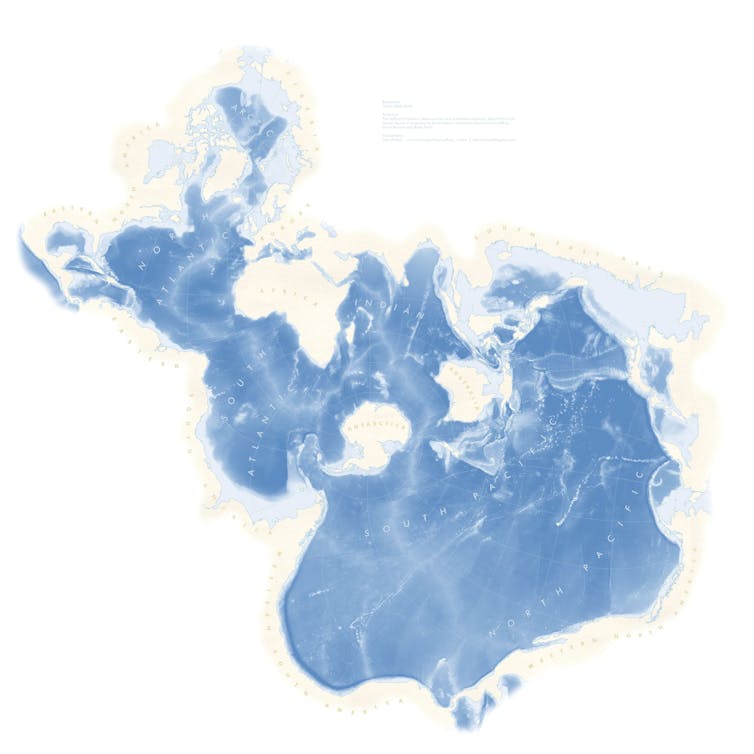
The Southern Ocean, also called the Antarctic Ocean (or even the Austral ocean), is like no other and best described in superlatives.
Let’s first look at the Southern Ocean’s capacity to store excess heat and carbon. The world’s oceans take up more than 90% of the excess heat generated by the burning of fossil fuels and a third of the additional carbon dioxide.
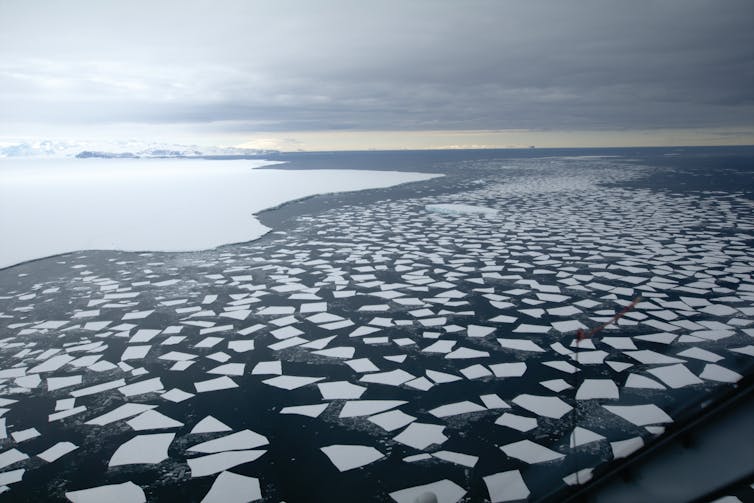
The Southern Ocean, south of 30°S, is estimated to store about 75% of this global oceanic uptake of excess heat and about 35% of the global uptake of excess carbon from the atmosphere. It is the primary storage of heat and carbon for the planet.
The Southern Ocean connects all major ocean basins, except the Arctic. The link is the Antarctic Circumpolar Current (ACC) – the largest ocean current on the planet. It carries more than 100 times the flow of all the rivers on Earth and transports enough water to fill Lake Ontario in just a few hours.
A combination of strong winds and a nearly uninterrupted passage around Antarctica give the ACC its strong flows and speed.
The Roaring Forties, Furious Fifties and Screaming Sixties are all popular names for the strong westerly winds that blow, nearly uninterrupted, across the Southern Ocean, creating equally impressive waves. This results in a massively energetic – and hard to measure – ocean surface.
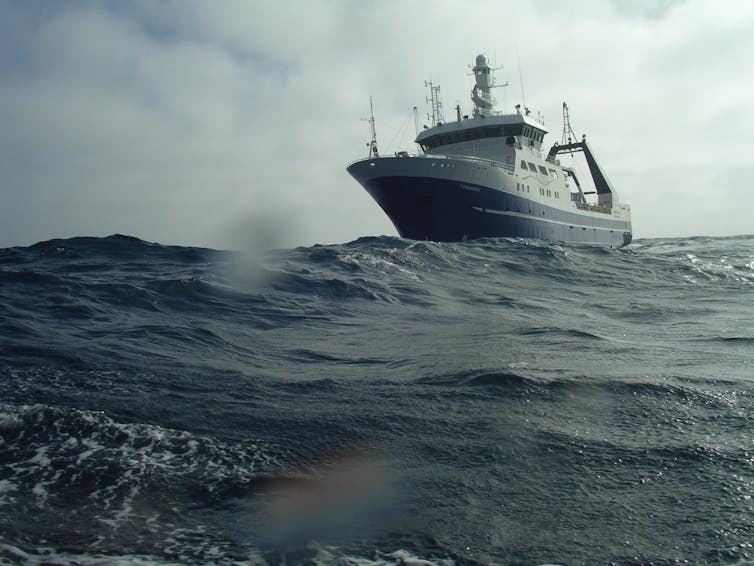
But the heat and carbon exchanges across this complicated interface are globally important, and oceanographers have designed tools specifically for this challenging environment.
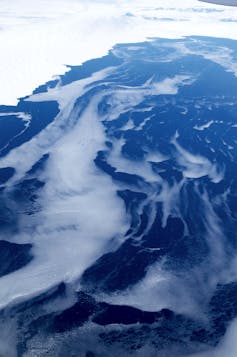
To really comprehend the Southern Ocean, one must think in three dimensions. Waters with different properties mix both horizontally and vertically in eddies.
Relatively warm subtropical water is mixed south, deep cool water from the North Atlantic rises back up toward the surface and colder polar water masses mix northward and sink back down.
This complex interplay is guided by the wind and by the shape of the seafloor.
To the north, there are only three major constrictions: the 850km-wide Drake Passage, and the submarine Kerguelan and Campbell Plateaus. To the south, the ACC butts up against Antarctica.
Here the ocean plays another crucial role in the global climate system by bringing relatively warm — and warming — Circumpolar Deep Water into contact with the ice fringing Antarctica.
The annual cycle of sea ice growing and melting around Antarctica is one of the defining rhythms of our planet and an important facet of the Southern Ocean. The two polar regions couldn’t be more different in this regard.
The Arctic is a small, deep ocean surrounded by land with only narrow exits. The Antarctic is a large landmass with a continental shelf surrounded by ocean. Each year, 15 million square kilometres of sea ice advance and retreat in these waters.
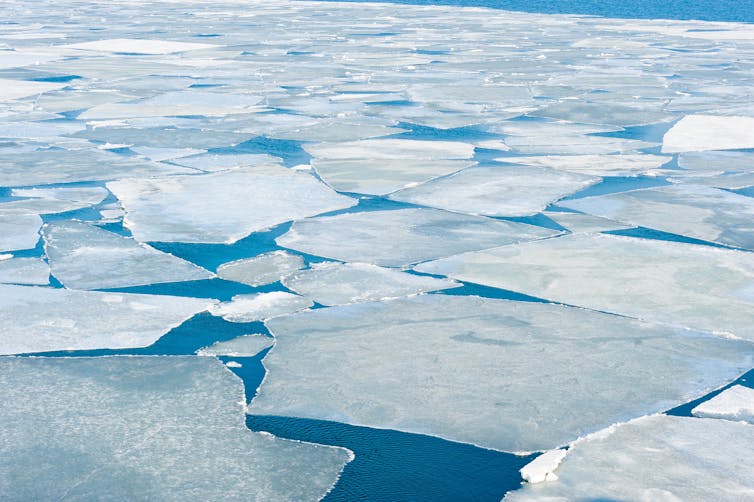
In contrast to the clear and dramatic changes in the north, the rhythm of Antarctic sea ice has followed less obvious patterns. In the face of a warming ocean, it was actually slowly expanding northward until around 2016, when it suddenly started to contract.
Looking at the annual cycle of Antarctic sea ice, one might think it simply grows and melts in place as things get cold and warmer through the year. But in truth, much of the sea ice production happens in polynya – sea ice factories near the coast where cold and fast Antarctic winds both create and blow away new sea ice as fast as it appears.
This process brings us back to global ocean circulation. When the new ice grows, the salt from the freezing sea water gets squeezed out and mixes with the seawater below, creating colder and saltier seawater that sinks to the seafloor and drains northward.
Polynya are in effect a metro stop on a global transport system that sees water sinking at the poles, flowing north to be mixed upwards in a cycle lasting close to 1,000 years.
Computer simulations have shown how the ice shelves at Antarctica’s fringe have waxed and waned over past millennia.
Because these floating extensions of the ice sheet interact directly with the ocean, they make the ice sheet sensitive to climate. Ocean warming and changes in the source of the water coming into contact with an ice shelf can cause it – and in turn the whole ice sheet – to change.
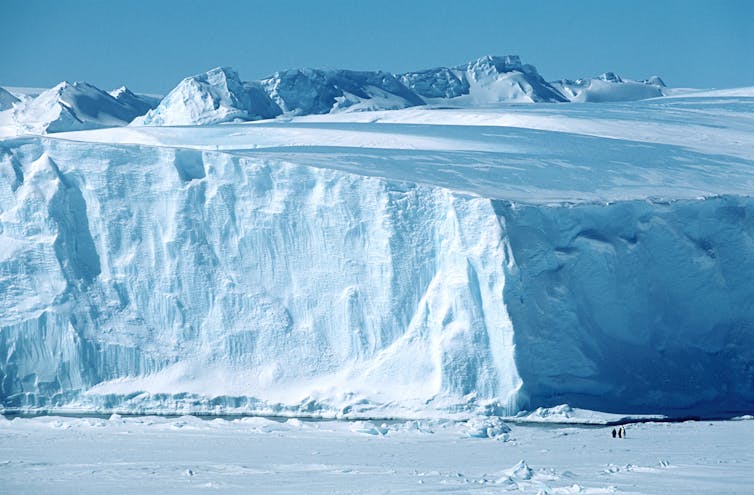
But not all ice shelves will respond to warming in the same way. Some ocean cavities are cold and slowly evolving. Others are actually described as hot – in polar terms – because of their interaction with Circumpolar Deep Water. The latter are changing rapidly right now.
We can observe many cryosphere processes from space, but to truly understand how far the ocean reaches beneath the ice we have to go hundreds of metres beneath the ice surface.
Making climate predictions requires an understanding of detailed processes that happen on short timescales, such as tidal cycles, in parts of the planet we are only beginning to explore.
How do we sample something so big and so stormy? With robots.
Satellites have been observing the ocean surface since the 1980s. This technology can measure properties such as temperature and ocean surface height, and even be used to estimate biological productivity. But satellites can’t see beneath the surface.
When the game-changing Argo programme started in the 1990s, it revolutionised earth science by building a network of drifting ocean sentinels measuring temperature and salinity down to a depth of two kilometres.
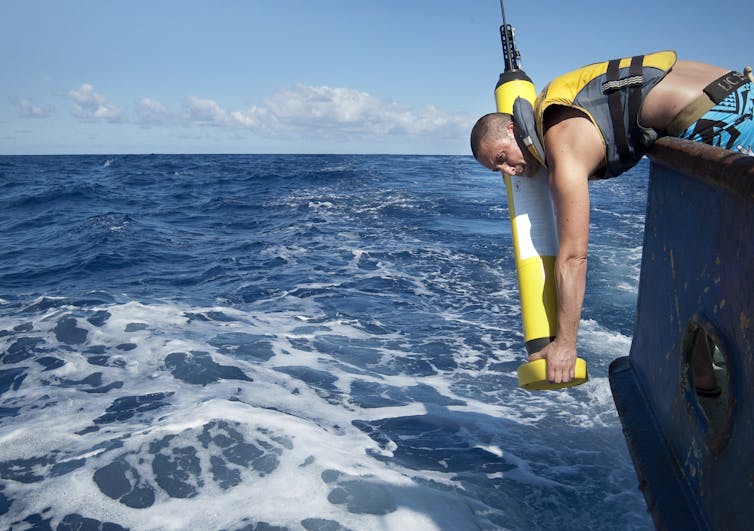
The research vessel Kaharoa holds the record for the most deployments of Argo probes in the Southern Ocean, including its most recent storm-tossed, COVID-19-impacted voyage south of Australia and into the Indian Ocean.
The Argo program is only the start of a new era of ocean observation. Deep Argo probes dive to depths of 6km to detect how far down ocean warming is penetrating.
Earth hasn’t always looked as it does today. At times in the planet’s past, the Southern Ocean didn’t even exist. Continents and ocean basins were in different positions and the climate system operated very differently.
From the narrow view of human evolution, the Southern Ocean has been a stable component of a climate system and subject to relatively benign glacial oscillations. But glacial cycles play out over tens of thousands of years.
We are imposing a very rapid climate transient. The nearly three centuries since the start of the industrial revolution is shorter than the blink of an eye in geological context.
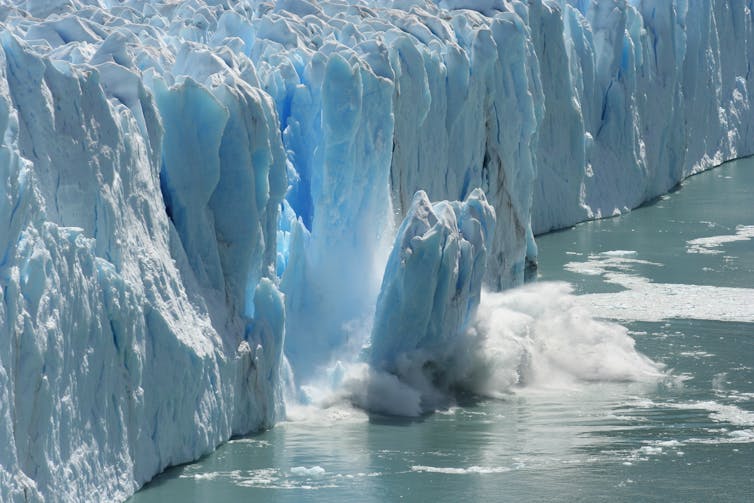
Future changes in the short (say by 2050) and long (by 2300) term are difficult to project. While the physics are relatively clear about what will happen, predicting when it will happen is more challenging.
Simulation tools that get the ocean, atmosphere and ice processes right are only starting to include ice shelf cavities and ocean eddies. The most recent synthesis of climate models shows progress in the simulated workings of the Southern Ocean. But sea ice remains a challenge to simulate well.
This is the frontier: a global research community working to connect data with rapidly improving computer models to better understand how this unique ocean operates.
At first glance, Antarctica seems an inhospitable and almost barren environment of ice and snow, speckled with occasional seabirds and seals.
But diving beneath the surface reveals an ocean bursting with life and complex ecosystems, from single-celled algae and tiny spineless creatures to the well-known top predators: penguins, seals and whales.
The Southern Ocean is home to more than 9,000 known marine species — and expeditions and studies keep revealing more.

It’s not easy to study life in the Southern Ocean. Waves can be more than 20 metres high, and icebergs and sea ice lurk among them.
The water temperature is often sub-zero – freshwater freezes at 0℃, but saltwater freezes at closer to -2℃. Although scuba diving is possible, a lot of research on life in the Southern Ocean is done through remote sampling.
Marine scientists use robotic tools such as remotely operated underwater vehicles to look at and collect samples, and grabs and dredges to bring up bottom-dwelling organisms. We take genetic samples from marine mammals by shooting tiny biopsy tubes (like needles), attached to a cord for retrieval, into the animal’s flesh from a distance.
We can glean wider information on diversity from environmental DNA (eDNA). Traces of organisms are filtered from samples of water and analysed using genetic tools that can usually identify what sorts of species are or were present.
Every expedition reveals new species – some of which are potentially commercially valuable, and all of which are important parts of the Southern Ocean ecosystem. Our knowledge of the diversity of the region is growing rapidly.
Nonetheless, the Southern Ocean is vast, and much of it remains either unsampled or undersampled.
In the Southern Ocean, primary producers (organisms at the start of the food chain) range from single-celled algae – such as diatoms with intricately detailed shells made of silica – through to large macroalgae like kelp.
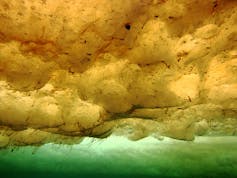
Kelp and other large seaweeds generally only survive where icebergs don’t often scrape the seafloor. Diatoms are diverse, and some species thrive on the underside of sea ice.
Ice algae form an important food source for krill, small crustaceans that are a critical part of Southern Ocean food webs.
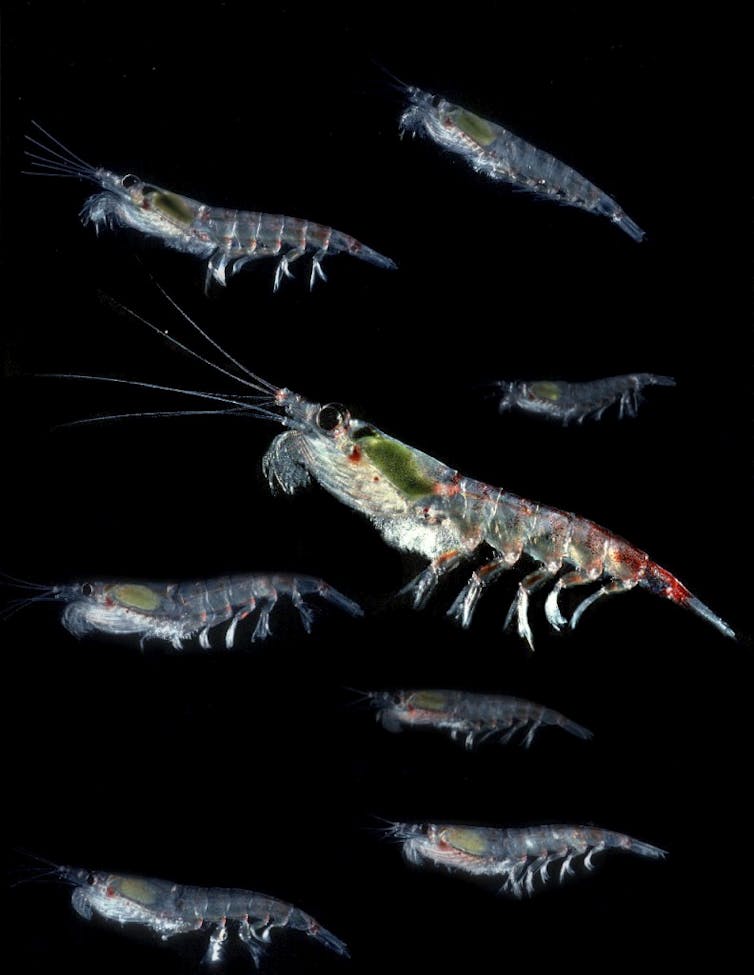
Astonishingly, the cold Southern Ocean is also home to hot hydrothermal vent systems. These communities, which include huge densities of crustaceans and echinoderms, get their energy from chemicals that seep out of Earth’s crust, rather than from the Sun.
Antarctic invertebrates make up more than 90% of the species in the Southern Ocean. More than 50% are unique to this ocean.
These invertebrates are often much larger than their relatives in more northern, warmer waters. This phenomenon is know as “polar gigantism” and is found across many groups, with giant sea spiders, huge sponges and scale worms the size of a forearm.
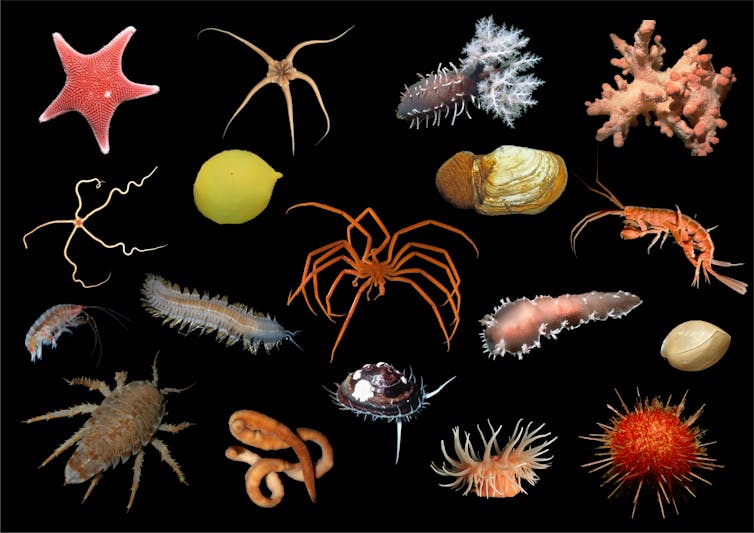
Nobody is quite sure why Antarctic invertebrates grow so large, but it may be related to high oxygen levels, slow growth rates or the absence of key predatory groups such as sharks and brachyuran crabs.
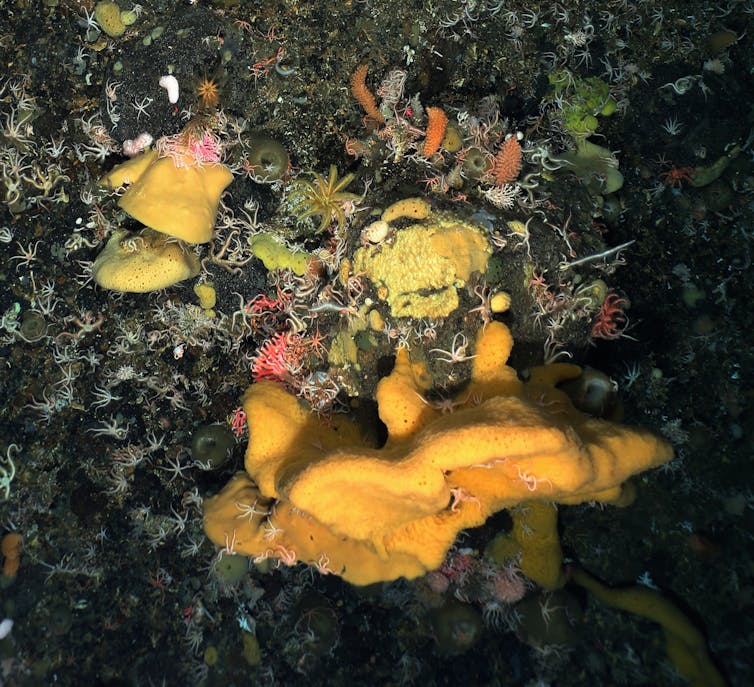
In the marine food chain, Antarctic krill swim between the algal primary producers and the iconic top predators we always associate with Antarctica.
Baleen whales get much of their energy from great gulps of swarming krill (10,000–30,000 individual animals per cubic metre), and the pink streaks in penguin and seal poo show they are also keen on these tasty crustaceans.
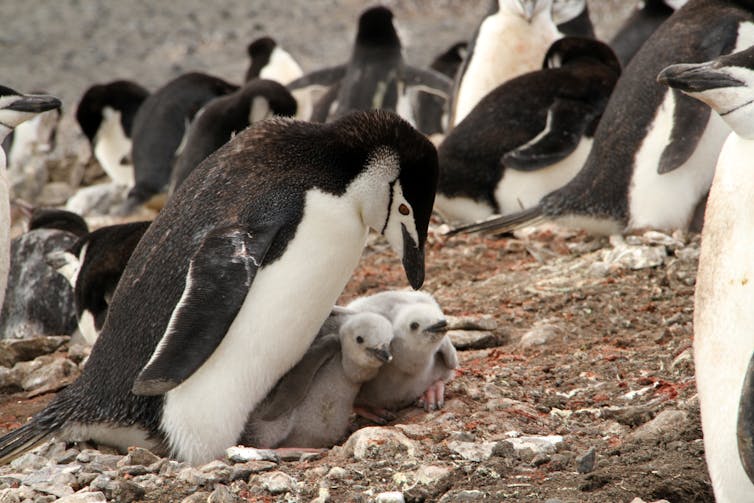
Fish and cephalopods (squid and octopus) thrive in the Southern Ocean, providing food for deep-diving marine mammals such as elephant seals. Some fish species are so well adapted to the oxygen-rich cold waters they no longer produce red blood cells but instead produce antifreeze proteins in their blood to help them survive in the subzero waters.
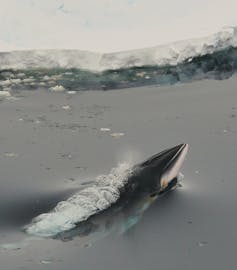
Arguably the most voracious predators in the Southern Ocean are humans.
Antarctica might be remote, but in the 200 or so years since its discovery, the seas around Antarctica have been heavily exploited by people.
First came the sealers, then the whalers, driving species to the brink of extinction. Even penguins were harvested for their oil.
More recently, fish and krill (which is fished for food or dietary supplements) have been the main targets, and populations of some species have declined sharply as a consequence.
When more indirect impacts like ocean warming and acidification combine with fishing, this can lead to declining populations of krill, which in turn leads to reduced numbers of top predators such as whales.
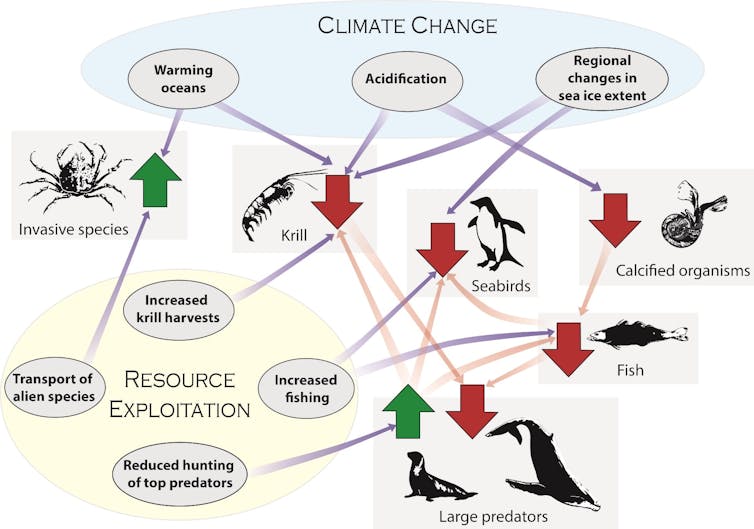
Fishing in the Southern Ocean can be hard to regulate because these waters do not belong to any one nation. To help manage the impact of fisheries, quotas that limit catches are now managed by the Commission for the Conservation of Antarctic Marine Living Resources (CCAMLR).
This international body is also working to establish more marine protected areas. Without these efforts to manage catches, critical parts of the food web (such as krill) could be exploited to such an extent that ecosystems could collapse.
More than 21,000 tourists and scientists visit Antarctica each year, potentially bringing pollution, diseases and invasive species. To manage human impacts on Antarctic ecosystems, and to help with political negotiations, the Antarctic Treaty came into force on June 23, 1961.
The treaty regulates all activity south of 60°S and includes an environmental protection protocol.
The impacts of global climate change and ocean acidification are nonetheless evident in the Southern Ocean, with warming ocean temperatures, reduction in sea ice and collapsing ice shelves.
Increasingly, research is showing that even the distant Southern Ocean is not truly cut off from the rest of the world, with warming, plastic pollution and non-native species making their way to Antarctic waters from beyond the mighty polar front.
Rafts of floating seaweeds from outside the Antarctic, some carrying animal passengers, are able to cross the Southern Ocean and reach Antarctic shores. At the moment, they don’t seem able to survive the extreme climate of Antarctica, but that could change with warming.
New species moving in and setting up shop will put a lot of pressure on Antarctica’s unique plants and animals.
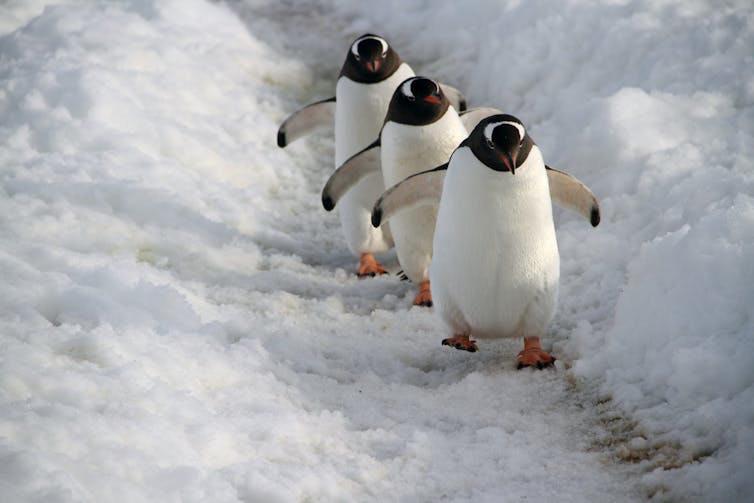
It’s not all doom and gloom, though. Over the several decades since the Antarctic Treaty came into force, we’ve seen that nations can work together to help resolve challenges facing the Antarctic. One example is the establishment of Antarctic Marine Protected Areas (MPAs).
This level of international cooperation should give us hope not just for the future of the Southern Ocean, but also for other key challenges the world faces.
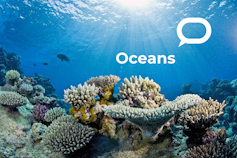
This story is part of Oceans 21
Five profiles open our series on the global ocean, delving into ancient Indian Ocean trade networks, Pacific plastic pollution, Arctic light and life, Atlantic fisheries and the Southern Ocean’s impact on global climate. Look out for new articles in the lead up to COP26. Brought to you by The Conversation’s international network.
This article is republished from The Conversation under a Creative Commons license. Read the original article.